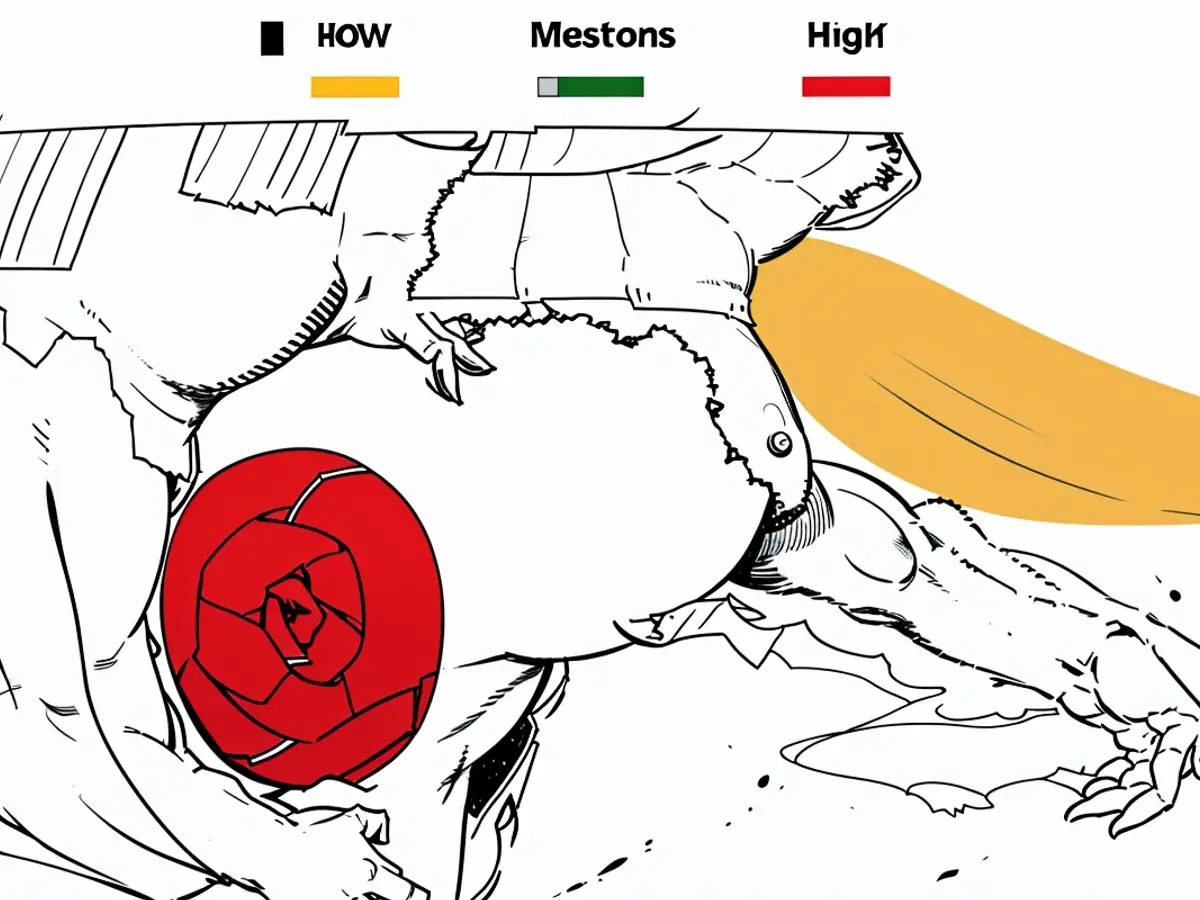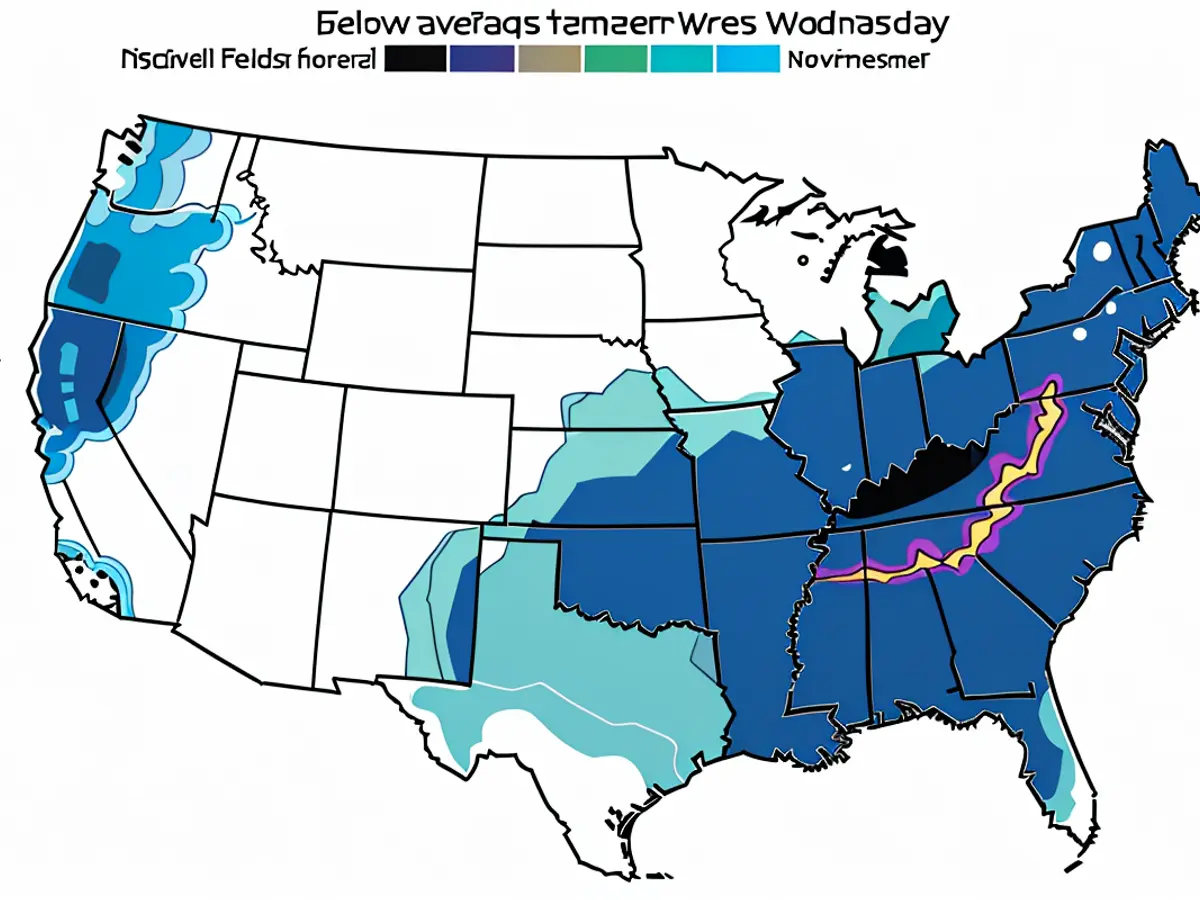Hurricane season's initial storm is predicted to materialize in the Gulf of Mexico. This isn't an isolated incident; expect further developments.
Here's the paraphrased text:
The southwestern Gulf of Mexico is gearing up to be the next hotspot for a hypersonically active hurricane season. With a high probability of formation before Wednesday, a potential hurricane is brewing due to the influence of the Central American gyre.
The gyre refers to a vast, disorganized area of showers and storms, reinforced by abundant tropical moisture, spinning over Central America and surrounding waters. It boasts a wide spin and copious moisture, helping tropical systems come to life when other crucial factors align, such as favorable upper-level winds and warm ocean water.
All the prerequisites for a tropical system are synchronizing early this week, signaling the arrival of the first tropical depression or storm of the season, which is expected to spawn from the gyre. If it sustains winds of at least 39 mph, it will graduate to Tropical Storm Alberto.
The system is likely to head toward northwest and approach the Mexico coast or southern Texas by Wednesday night or early Thursday. A detailed analysis of the system’s exact power and trajectory will be available in the subsequent 48 hours as it banks a center of rotation. However, its strength will be constrained by its limited duration over water.
The system's prime danger
Multiple days of torrential downpours are expected to impact Central America, southern Mexico, and the western Gulf Coast of the US this week, regardless of whether a tropical system materializes.
Heavy rain was already marring sections of Mexico, Guatemala, Belize, El Salvador, and Honduras on Monday as the gyre churned. The areas could see double-digit precipitation totals by Thursday. Rain is essential in parts of Mexico and Central America devastated by weeks of unyielding heat. However, prolonged episodes of heavy rain will quickly inundate parched soils that cannot absorb water as swiftly as it falls, resulting in hazardous floods.
Deep tropical moisture was also fueling storms as far north as the US's western Gulf Coast. Double-digit rainfall totals are predicted in parts of coastal and southern Texas by the weekend, while other sections of the Gulf Coast could collect several inches by midweek.
A level 2 of 4 flood risk is in effect from the Texas coast to southern Alabama on Monday. The risk escalates to level 3 of 4 in parts of Texas and Louisiana on Tuesday.
By Wednesday, the air over the Gulf Coast will carry "staggering amounts of moisture," potentially leading to "easy" flash flooding, the Weather Prediction Center warned on Monday. A level 3 of 4 risk persists in Texas on Wednesday.
Heavy rain isn't generally welcome in specific regions of the US Gulf Coast, as June has been drier following a soaking spring, but the soil and river areas in eastern Texas and western Louisiana are still holding onto a significant amount of water.
Another potential tropical threat rears its head
Another hazardous tropical situation is brewing in the Atlantic as development starts in the Gulf of Mexico.
An area of showers and storms several hundred miles east of the Bahamas shows potential for the emergence of a prospective tropical system later this week. As of now, the National Hurricane Center conceded a minimal chance for it to develop into a tropical system.
Numerous atmospheric elements must fall into alignment for the area of stormy weather to get its act together, but the chance for development exists over the next few days as it inexorably moves westward.
If something tropical does develop, it could reach the southeastern US by Thursday or Friday and skirt the heat dome afflicting areas further north. It's presently unclear exactly which areas could be affected, but regions from Florida to the Carolinas should remain vigilant as the forecast refines in the coming days.
Relentless rain could douse sections of the Southeast coast, and stormy seas may surge from the Bahamas to the mid-Atlantic coasts regardless of development.

Read also:
The hypersonically active hurricane season is predicted to bring a potential storm to the Gulf of Mexico, further reinforcing the area's status as a hazardous region. This brewing storm could graduate to Tropical Storm Alberto if its winds reach 39 mph, posing a threat of torrential downpours and floods in Central America, southern Mexico, and the western Gulf Coast of the US.








